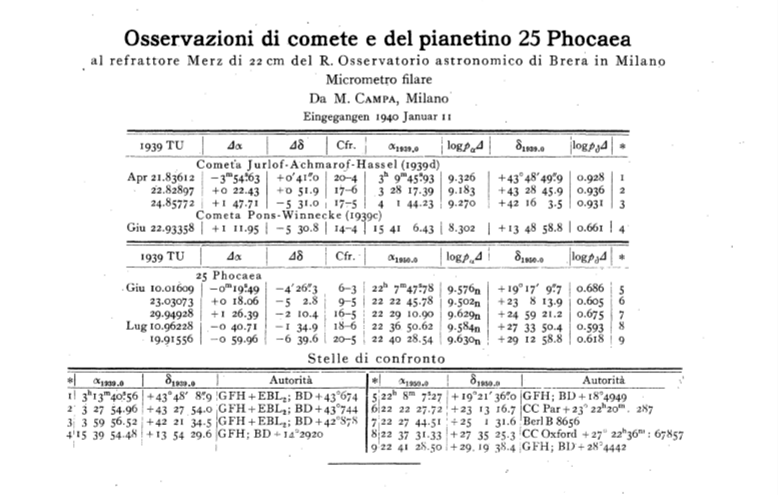
Maria Campa is the first woman astronomer at the Brera Astronomical Observatory. She started working at the Observatory in 1936, not as a secretary or a housekeeper, but as a scientist.
In the archives, there is evidence of a previous application from Maria Teresa Giudici, from Padua, in 1902. She applied for a job as assistant astronomer, but the Director, Giovanni Celoria, turned down her request. Some 30 years later, the Observatory finally opened the field to women, and gave them an independent status separate from that of their more famous husbands or brothers.
Maria Campa was born in Galatina, in the province of Lecce in Apulia, in 1897. She graduated in Mathematics and Physics, became assistant professor of Geodesy at the University of Naples, and then assistant astronomer at the Trieste Astronomical Observatory from 1930 to 1935.
Before her arrival in Trieste she published papers on mathematical physics, in particular on the effects of electromagnetic fields and X-rays on Antimony, a metalloid used to produce semiconductors and flame retardants.
At the Brera Observatory, she mainly worked on astrometry, comets and other small Solar System bodie, and used most of the same telescopes Schiaparelli had used. She published her papers on the Memories of the Italian Astronomical Society and the german journal Astronomische Nachrichten, the first scientific journal on astronomy, still published today.
She also took part in collecting meteorological data and in the measurements of latitude. During World War II she kept operating the Observatory practically by herself, because this research was very useful in time of war.
We know that she was still working at the Observatory in 1959, but we don’t know when she left nor the date of her death.
Many women astronomers followed her example and worked (and still do!) in Brera and Merate. Among them we mention Margherita Hack, who worked in Merate since 1954, where she completed many projects on spectroscopy and stellar astrophysics, until she moved to the Trieste Astronomical Observatory in 1964, where she become director, the first woman in Italy to fill that role.
